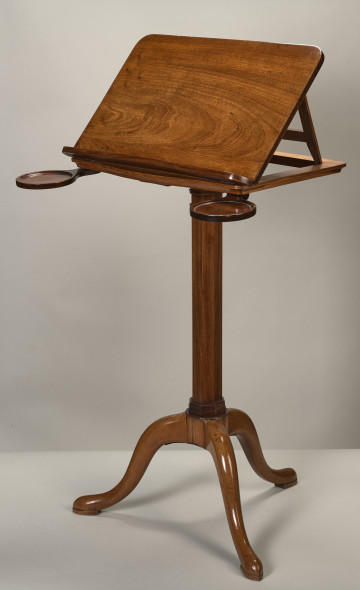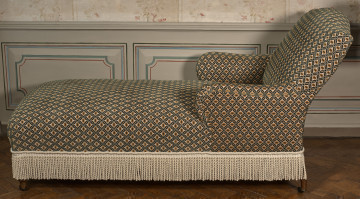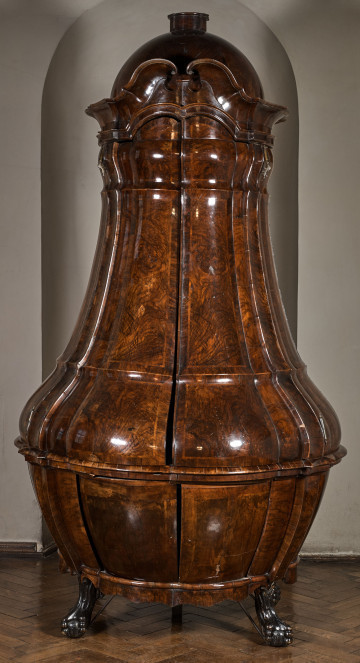
Wooden desktop
18th-19th century
Castle Museum in Łańcut
Part of the collection: Furniture and interior furnishings
In the18th-century France a division was used between representative furniture called sièges meublants, i.e. decorative, showy furniture, and lighter utilitarian furniture called sièges courant, i.e. mobile seating. Chairs and armchairs ‘à la reine’ were among the representative sièges meublants. Placed against the walls, they occupied a permanent place in the interior furnishings. As heavy furniture, they were unsuitable for moving, unlike the lighter and more manageable cabriolets classified as sièges courant. The first ‘à la reine’ chairs and armchairs appeared during the regency of Philippe d’Orléans, who ruled from 1715 to 1723 in place of the under-age King Louis XV. According to researchers and experts, this type of furniture was first created by Jean Baptiste Tillard, who came from a carpentry family. This craft was shared by his son and namesake, as well as his brother Nicolas. Since obtaining his craft master’s title in 1717, Jean Baptiste senior ran a workshop at Rue de Cleryin Paris. The ‘à la reine’ chairs and armchairs of his design are characteristic for their backrest with a straight, slightly tilted back line. The backrests are usually rectangular in shape, although this is not a rule. The furniture seats have a trapezoidal projection with curved front edge. The structural stiles of the framework are richly moulded and decorated with carving. The usually upholstered ‘à la reine’ chairs and armchairs, together with the lighter cabriolets became the most characteristic furnishings of the Louis XV and Louis XVI eras. Specialists associate the term ‘à la reine’ or ‘in the queen’s style’ with the French queen Maria Leszczyńska, wife of Louis XV from 1725, in whose time this furniture was popularised. Teresa Bagińska-Żurawska https://orcid.org/0000-0002-9243-3967
Author / creator
Dimensions
height: 96 cm, width: 58 cm
Object type
Furniture and interior fittings
Technique
carpentry
Material
wood
Creation time / dating
Creation / finding place
Owner
Castle Museum in Łańcut
Identification number
Location / status

18th-19th century
Castle Museum in Łańcut

20th century
Castle Museum in Łańcut

18th century
Castle Museum in Łańcut
DISCOVER this TOPIC
Castle Museum in Łańcut
DISCOVER this PATH
Educational path